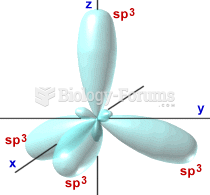Answer to Question 1
Me gusta la leche represents an African-Ecuadorian interpretation--with phrasing twists, rhythmic variation and nuance, and the requinto's dulzura sweetness--of an Indigenous genre (sanjun) of the neighboring Quichua within a Spanish-speaking nation.
Answer to Question 2
Similarities: same basic genre (sanjun); same doublecouplet construction, and comparable tempo, and phrases of 8 beats. The short-long-short rhythmic marker is found in both examples (marked with a in the chart below).
Differences: in the Chota sanjun of Me gusta la leche the rhythm of second four beats of the main phrase is similar to--but not exactly the same as--the rhythm of the first four beats. In the case of the Quichua sanjun, the rhythm of the second four beats (beats 5-8) is exactly the same as the rhythm of the first four beats (beats 1-4)--known as isorhythm. (See also comparison chart below.)
Comparison of Quichua and Chota Sanjun Phrases
ta = short (sixteenth note)
Ta = long (eighth note)
TA = longer (quarter note)
= short-long-short marker (sixteenth-eighth-sixteenth note pattern)
BEAT: 1 2 3 4 5 6 7 8
Quichua sanjun phrase Ta Ta ta-Ta, ta Ta Ta TA Ta Ta ta-Ta, ta Ta Ta TA
(Muyu muyari warmigu)
Chota sanjun phrase ta ta ta ta Ta Ta ta ta ta ta TA ta ta ta ta ta-Ta, ta Ta ta ta TA
(Me gusta la leche)
BEAT: 1 2 3 4 5 6 7 8
Note the isorhythmic structure of the Quichua sanjun phrase. The rhythm of the second half of the phrase (beats 5-8) is identical to the rhythm of the first half of the phrase (beats 1-4). However, in the Chota sanjun the rhythm of the second half of the phrase (beats 5-8) is similar, but not identical, to the rhythm of the first half of the phrase (beats 1-4).
Differences in Quichua and Chota sanjuanes continued:
Me gusta la leche has syncopation (misplaced accent) in the third strophe (verse) by accenting a normally weak part of the beat, the fourth sixteenth note of beat 6, and thereby adding a rhythmic drive that is not apparent in the Quichua sanjun. There is different instrumentation in the two examples: harp, golpe and singer in Muyu muyari warmigu versus two male vocalists-guitarists, lead (requinto) guitar, and guiro (scraper) in Me gusta la leche.
The close geographical proximity of the two cultures, Quichua and African-Ecuadorian has led to the sharing of the sanjun genre. (Note their locations on the map in Worlds of Music.)







